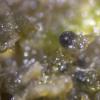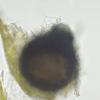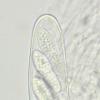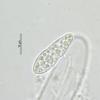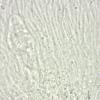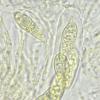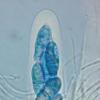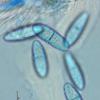
26-12-2025 21:19
Arnold BüschlenPithyella challaudii Pirou. Ist als Bryoparasit in

24-12-2025 17:08
Hulda Caroline HolteHello, I have found this propoloid ascomycete on

21-12-2025 09:32
Hello.A tiny ascomycete found embedded in wood in

21-12-2025 21:32
Pol DebaenstHello, Garden, Burgweg 19, Veurne, BelgiumOn 10/1

22-12-2025 23:38
Patrice TANCHAUDBonsoir, récolte sur un mur en pierre, apothéci
Bryostroma
Elisabeth Stöckli,
16-09-2024 14:20
Sur une pierre recouverte de mousse (forêt de montagne à 2'000m), périthèces piriformes avec une petite papille, 0.15 - 0.25 mm de diamètre, ascus bituniqué, avec huit pores, IKI-, 120 - 150 x 20 - 25 µm, spores verruqueuses, hyalines, à deux cellules, 20 - 32 x 8 - 10 µm. Ces caractéristiques me font penser à B. popei, sauf que mes spores sont plus larges. Qu'en pensez-vous ? Merci d'avance pour vos avis.
Elisabeth
Georges Greiff,
22-09-2024 20:50
Re : Bryostroma
Dear Elisabeth,
Excellent find and documentation as always. This does indeed seem to be a Bryostroma. It will be important to identify the host. The type species, B. racomitrii, is possible, though it should have a mixture of 8- and 4-spored asci. B. axillare is also close. All the known species are in the B. popei paper key.
But there are likely many undescribed species around. I have one on Racomitrium fasciculare with 4-spored asci but much smaller spores than B. racomitrii, so it must be something new. But the collection was too small!
All the best,
George
Excellent find and documentation as always. This does indeed seem to be a Bryostroma. It will be important to identify the host. The type species, B. racomitrii, is possible, though it should have a mixture of 8- and 4-spored asci. B. axillare is also close. All the known species are in the B. popei paper key.
But there are likely many undescribed species around. I have one on Racomitrium fasciculare with 4-spored asci but much smaller spores than B. racomitrii, so it must be something new. But the collection was too small!
All the best,
George
